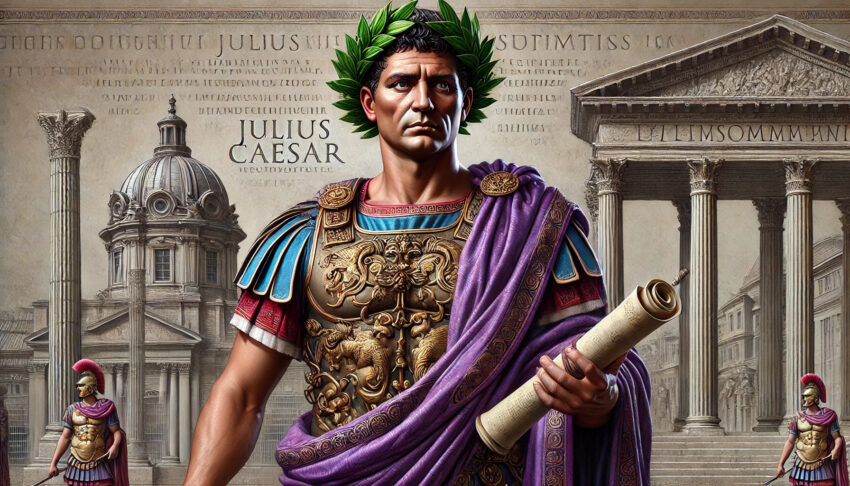Julius Caesar Undertakes plans for major public works, including the rebuilding of Carthage and Corinth, and begins preparations for a campaign against Parthia.
In the final years of his life, Julius Caesar launched a series of ambitious public works and military preparations that aimed to solidify Rome’s power and legacy. Recognizing the strategic and economic importance of certain regions, he initiated plans to rebuild the ancient cities of Carthage and Corinth, both of which had been destroyed by Rome in 146 BC during earlier conflicts.
Carthage, located in North Africa, was once Rome’s fierce rival during the Punic Wars. Caesar envisioned transforming it into a prosperous Roman colony, which would not only secure Rome’s influence in the Mediterranean but also provide fertile lands for Roman veterans and citizens. Similarly, the rebuilding of Corinth in Greece was intended to restore a vital commercial hub, enhancing trade routes and cultural exchange between Rome and the eastern provinces.
These reconstruction projects were part of Caesar’s broader efforts to address social and economic issues within the Republic. By providing land and opportunities in these new colonies, he sought to alleviate overcrowding and unemployment in Rome, offering veterans and the poor a chance for a fresh start.
At the same time, Caesar began extensive preparations for a military campaign against the Parthian Empire, Rome’s dominant rival to the east. The Parthians had inflicted a humiliating defeat on Rome at the Battle of Carrhae in 53 BC, where General Crassus was killed and the Roman legions suffered significant losses. Avenging this defeat was a matter of both honor and strategic necessity for Caesar. He planned to lead a massive expedition to not only reclaim lost standards and prisoners but also to expand Rome’s eastern territories.
To support these grand initiatives, Caesar implemented various reforms to streamline governance and resource allocation. He reorganized provincial administrations to reduce corruption, standardized tax systems, and initiated the construction of roads and infrastructure to improve connectivity across the empire.
Unfortunately, Caesar’s assassination on the Ides of March in 44 BC abruptly ended these plans. His death plunged Rome into a series of civil wars, delaying the execution of his projects. Eventually, under the rule of his successor Augustus, some of Caesar’s visions, such as the establishment of colonies in Carthage and Corinth, were realized.
Caesar’s endeavors in public works and military expansion reflect his ambition to leave a lasting impact on the Roman Republic. His plans demonstrated a blend of military strategy, social reform, and urban development, aiming to enhance Rome’s prosperity and secure its dominance for generations to come.
 |
 |
 |


